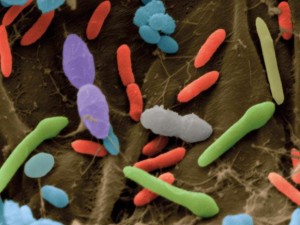CNN wrote about strange, crazy food trends that seem to receive a following. I thought it would be interesting to analyze them medically and point out to the reader what’s right and what’s wrong.
Crazy food trend one: Ashwagandha
In India this herb, also known as Indian ginseng has been used as part of the Ayurvedic medicine for centuries.
At the 22nd Annual Anti-Aging (A4M) Las Vegas Conference in mid December 2014 Pamela Smith gave a presentation entitled ”How To Maintain Memory At Any Age”. She gave a comprehensive overview of what you can do to prevent Alzheimer’s disease.
Dr. Smith recommended many other supplements, which I will not explain in detail here: B vitamins, vitamin E and C, carnosine, acetyl-L-carnitine, boron, ginger, coenzyme Q-10 (or CoQ-10), curcumin, vinpocetine, zinc, grape seed extract, blueberry extract, Ashwagandha, glyceryl-phosphoryl-choline, SAMe, huperzine A and DMAE and others. She specifically pointed out that she felt Ashwagandha was very powerful. It helps people preserve their memory, more so than regular drugs that doctors prescribe.
When the benefits of taking CoQ-10 were discussed, Dr. Smith reminded the audience “whatever is good for the heart, is good for the brain”. She recommended reading Dr. Perlmutter’s book from which this phrase was borrowed (Ref. 1).
Ashwagandha is an herb with multifaceted effects. Here is a review by a doctor about the various effects of Ashwagandha.
It does not belong into foods; it should only be in use as a supplement, if your doctor agrees with it.
Crazy food trend two: astrologically farmed eggs
Picture biodynamic farming of eggs with the guidance of the moon. Now you are producing astrologically farmed eggs. The Hemsley sisters insist you should eat these astrologically farmed eggs for breakfast. I don’t buy into this. This is hokey! It smells like somebody is trying to lure money out of your pocket by trying to convince you that there is health benefit to “astrologically farmed eggs”. There isn’t.
What does make sense is to buy eggs that do not have antibiotic residue in them and that came from free-range hens. Yes, I buy organic eggs that are somewhat more expensive. If you like to buy organic omega-3 eggs, this would also be scientifically superior to ordinary hen eggs. There is also the difference of “free run” and “free range” hens. “Free run” does not give you any guarantee for a healthy product, as the birds live in crowded barns and are likely receiving medications to combat diseases. “Free range” birds are hens that have access to the outdoors, and there is less of the overcrowding that is common in a barn.
Crazy food trend three: Cordyceps
There are about 400 subspecies to these sac fungi. Cordyceps has been used in Chinese medicines to help as an aphrodisiac, help improve kidney function in the elderly and also with regard to some anticancer activity. There are very few clinical review papers to substantiate any of these claims; yet traditional medicine insists on using Cordyceps for these purposes. If you want to see a traditional Chinese doctor, do so on your own. But don’t consume food that is prepared with Cordyceps.
Gwyneth Paltrow’s morning smoothie cost more than 200$, so if anything, I would be more concerned about bankruptcy than real nutrition with this type of breakfast drink.
I have my doubts that Cordyceps that kill ants to sprout their spores in their corpses (see Wiki link above) could be of any objective benefit to humans.
Crazy food trend four: blue majik
Blue Majik is just another name for a common antioxidant, phycocyanin. It derives from algae, Arthrospira platensis.It has some similarity with the green spirulina. But just because it seems fashionable right now, does not mean that it is superior to vitamin C as a cheap antioxidant or vitamin E. The creators of blue majik are cashing in on color effects and selling false hopes of better health. You can live very well without it.
Crazy food trend five: cannabis
When I heard that people are starting to mix cannabis into foods, it reminded me about a story I heard from one of my patients in the mid 1980’s who worked in the shipyards of North Vancouver. One day he saw some cookies on a tray in the lunchroom. A co-worker offered some to him and he ate it. After 5 minutes his head started pounding with an excruciating headache and he became nauseous. Shortly after he vomited and started getting a rapid heartbeat. His co-workers laughed and told him that these were very special cookies that they treated with marijuana.
I suspect that whoever baked these cookies used a higher dose of marijuana and my patient experienced a marijuana overdose.
This example illustrates that cannabis has special properties that affect the body.
In the brain it binds to cannabinoid receptors. These are not only present in brain tissue, but also in lungs, liver and kidneys. Even the immune cells have cannabinoid receptors.
There may be a place for chronic pain patients under the guidance of a physician to get medical marijuana. But keep cannabis away from your food. Don’t consume it! You have no idea what you are doing to your body that is full of receptors for cannabis. Cannabis requires treatment like a drug. This means a doctor should prescribe marijuana and the patient s should take it according to doctor’s orders. Like with any drug there will be effects and also side effects.
Conclusion
Out of five crazy foods reviewed there are only 2 that merit consideration, but not mixed into food. These are Ashwagandha as a supplement (part of memory loss prevention and others) and cannabis for chronic pain. A physician should supervise both. The remainders are fashion crazes. Unfortunately many people will fall for these fashion trends and lose a lot of money. This will make someone who peddles these items very rich. Is this what you want to do: throw your money out and toss it right into the pocket a huckster? Rethink what you want to do. You may just want to buy organic eggs from chickens that happily scratch away in a farmyard. This is very much down to earth, and nothing “astronomically farmed” is needed.
References
Ref 1: David Perlmutter, MD: “Grain Brain. The Surprising Truth About Wheat, Carbs, And Sugar-Your Brain’s Silent Killers.” Little, Brown and Company, New York, 2013.







